Displacement
Displacement in physics refers to the change in position of an object. It is a vector quantity, which means it has both magnitude and direction.
There are a few key concepts to understand when it comes to displacement:
- Magnitude: The magnitude of displacement is the straight-line distance between the initial and final positions of an object. It is typically measured in units such as meters (m) or kilometers (km).
- Direction: The direction of displacement is the straight-line path between the initial and final positions of an object. It is often expressed using compass directions (e.g., north, south, east, west) or angles relative to a reference direction.
- Vector Representation: Displacement is often represented as a vector quantity, with an arrow indicating both magnitude and direction. The length of the arrow corresponds to the magnitude of displacement, while the direction of the arrow indicates the direction of displacement.
When calculating displacement, it's important to consider both the magnitude and direction to fully describe the change in position of an object.
Formulas for Displacement
There are a couple of common formulas used to calculate displacement:
- Displacement as a Vector: The displacement vector can be calculated using the formula Δr = rf - ri, where Δr is the displacement vector, rf is the final position vector, and ri is the initial position vector.
- Displacement Magnitude: The magnitude of displacement can be calculated using the formula |Δr| = √(Δx2 + Δy2), where Δx and Δy are the changes in position along the x and y axes, respectively.
Examples of Displacement
Here are a few examples of displacement to illustrate its concept:
- An object moves 5 meters east and then 3 meters north. The displacement of the object can be calculated using the Pythagorean theorem to find the magnitude, and trigonometry to find the direction.
- A car travels 100 kilometers northeast from a city to another city. The displacement of the car is 100 km in a northeast direction.
Study Tips for Displacement
When studying displacement, it's important to:
- Understand the difference between distance and displacement.
- Practice vector addition and subtraction to calculate displacement.
- Be familiar with using trigonometric functions to find the direction of displacement.
- Work through plenty of practice problems to reinforce understanding.
By mastering the concept of displacement and practicing its calculations, you'll be well-prepared to handle problems related to position changes and motion in physics.
.◂Science Worksheets and Study Guides Eighth Grade. Understanding Weather
Study Guide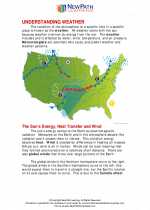 Understanding Weather
Understanding Weather  Activity Lesson
Activity Lesson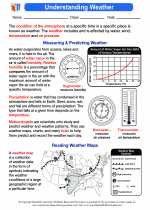 Understanding Weather
Understanding Weather  Worksheet/Answer key
Worksheet/Answer key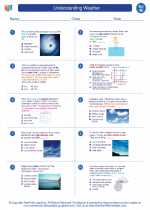 Understanding Weather
Understanding Weather  Worksheet/Answer key
Worksheet/Answer key Understanding Weather
Understanding Weather  Worksheet/Answer key
Worksheet/Answer key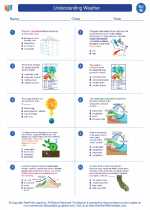 Understanding Weather
Understanding Weather  Worksheet/Answer key
Worksheet/Answer key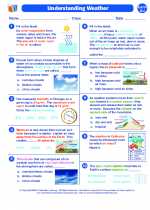 Understanding Weather
Understanding Weather  Vocabulary/Answer key
Vocabulary/Answer key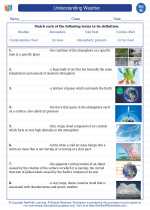 Understanding Weather
Understanding Weather  Vocabulary/Answer key
Vocabulary/Answer key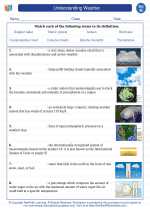 Understanding Weather
Understanding Weather  Vocabulary/Answer key
Vocabulary/Answer key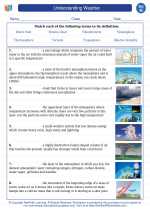 Understanding Weather
Understanding Weather 

 Activity Lesson
Activity Lesson
 Worksheet/Answer key
Worksheet/Answer key
 Worksheet/Answer key
Worksheet/Answer key
 Worksheet/Answer key
Worksheet/Answer key
 Worksheet/Answer key
Worksheet/Answer key
 Vocabulary/Answer key
Vocabulary/Answer key
 Vocabulary/Answer key
Vocabulary/Answer key
 Vocabulary/Answer key
Vocabulary/Answer key

The resources above cover the following skills:
Earth/Space Science: Students will use scientific skills and processes to explain the chemical and physical interactions (i.e., natural forces and cycles, transfer of energy) of the environment, Earth, and the universe that occur over time.
Interactions of Hydrosphere and Atmosphere: Cite evidence to explain the relationship between the hydrosphere and atmosphere.
Recognize and describe the water cycle as the distribution and circulation of Earth's water through the glaciers, surface water, groundwater, oceans, and atmosphere.